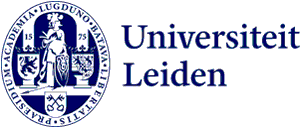
Meet postdoc Ana Zora Maspoli: ‘I came to Leiden to find a new way to look at the dilemma of Romanisation’
Looking for a different approach in the ongoing discussions on the ethereal matter of Romanisation, Ana Zora Maspoli joined Miguel John Versluys’ research group as a postdoc guest researcher. While she has been active in our Faculty since February 2022, you may not have met her yet due to the Covid-19 lockdowns. About time to rectify this.
From roman Vienna to Windisch
Originally from Switzerland, Maspoli studied archaeology at the University of Vienna. ‘I focused on Classical Archaeology, including the archaeology of the Roman Provinces.’ She wrote her Master’s thesis on Roman military equipment at the site of Vindobona, the Roman fortress in the heart of Vienna. ‘After graduation I started a PhD on the Roman cavalry fortress at the nearby site of the auxiliary fortress Ala Nova, located near today’s airport of Vienna.’ In her PhD she made a correlation with a nearby Roman cemetery, complementing the data from both sites.
As she was finishing her PhD, Maspoli joined the Archaelogical Department of Kanton Aargau at Brugg/Windisch for three years. ‘Here lies one of the major Roman sites of Switzerland: Vindonissa. I am now focusing on this site again in a postdoc at the University of Basel, as well as in Leiden.’

Cemetery
Her project is focused on a first century AD Roman cemetery where mainly women, children and slaves have been buried. ‘The general setting of this cemetery is a unique starting point. At some point the cemetery was covered by a landslide, preserving the archaeological record afterwards.’ Excavating this cemetery offers a wholly new dataset on the burials of people that are often invisible. ‘We try to do an interdisciplinary investigation of those burials, especially on the archaeobiological data.’

Objectscapes
The second part of this research project brought her to Leiden. ‘In the German part of the Roman provinces there is a large debate on the complex term of Romanisation. I was always very unhappy with that concept, since I find it somewhat one-sided and simplified. Cultural influence at Vindonissa and in general is dynamic and multi-directional’ Maspoli started looking for a way out of this discussion. ‘I read Miguel John Versluys’ article in which he suggested that the concept of globalization would be one possible way out of this dilemma, especially regarding his ideas on working with objectscapes. I liked this a lot, so when I heard of the possibility of funding for an international postdoc for one year from the Swiss National Science Foundation, the decision was made.’
So here she is. ‘I have a one-year association with Leiden. The scholarship is specifically meant for focus on research. I use this time to widen my scope and break out of the patterns that I was taught about. It certainly was the right choice.’

